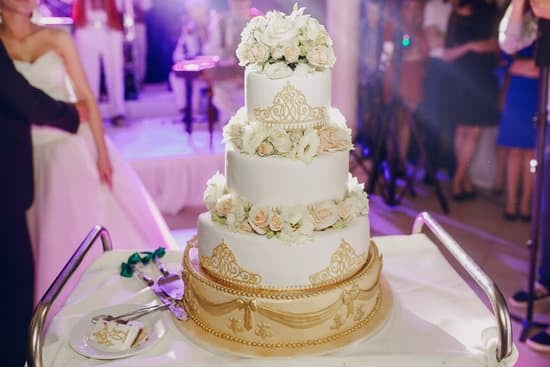Ghetto wedding rings, often referred to as non-traditional or unconventional wedding bands, have been gaining popularity in recent years for their unique style and cultural significance. These rings provide an alternative to the traditional diamond ring and hold special meaning within certain communities. While the term “ghetto” may carry negative connotations, in this context, it signifies a departure from mainstream norms and a celebration of individuality.
The history of ghetto wedding rings can be traced back to various cultural movements that prioritize self-expression and authenticity. These rings have evolved over time to reflect personal values, creativity, and diverse aesthetics. Within different cultural contexts and communities, ghetto wedding rings are often viewed as symbols of resistance against societal expectations and a way to showcase one’s personal style.
From bold designs to unconventional materials, ghetto wedding rings come in a variety of styles that cater to different tastes and preferences. DIY options have also gained traction, providing budget-friendly alternatives for those looking to create something truly unique for their special day.
Celebrities have even embraced this trend, opting for non-traditional rings that make a statement about their relationships and values. Stay tuned as we delve deeper into the history, significance, types, controversies, and personal stories surrounding ghetto wedding rings.
History of Ghetto Wedding Rings
Ghetto wedding rings have a rich history that dates back to communities where traditional engagement and wedding rings were either unaffordable or not culturally significant. The term “ghetto wedding rings” originated as a way to describe non-traditional or unconventional rings that held just as much value and love as their more expensive counterparts. Over time, the meaning of ghetto wedding rings has evolved to encompass creativity, individuality, and breaking free from societal norms.
Throughout history, marginalized communities have found ways to adapt and create their own traditions when faced with financial constraints or cultural differences. Ghetto wedding rings became a symbol of resilience and resourcefulness, allowing couples to express their commitment in a meaningful way despite external challenges. These rings serve as a reminder that love transcends material possessions and can be celebrated in various forms.
In different cultural contexts, ghetto wedding rings hold different meanings. For some, they represent rebellion against the commercialization of weddings and a rejection of outdated customs. In other communities, they symbolize unity, strength, and the importance of staying true to one’s roots.
Regardless of the interpretation, ghetto wedding rings showcase the diversity and creativity that exist within relationships all around the world. Through these unique symbols of commitment, couples are able to embrace their identities and celebrate their love in truly authentic ways.
Cultural Significance
Ghetto wedding rings, often referred to as non-traditional or unconventional wedding rings, hold a significant cultural significance within various communities around the world. While some may view these rings as a departure from traditional norms, they are deeply valued by those who choose them. In certain cultural contexts, ghetto wedding rings symbolize individuality, creativity, and a break from societal expectations.
In many communities, the choice to opt for ghetto wedding rings is seen as a way to challenge conventional ideas of what a wedding ring should look like. These rings can represent love and commitment just as much as more expensive or traditional options. The embrace of ghetto wedding rings in different cultural settings highlights the diversity of perspectives surrounding marriage and relationships.
One of the reasons ghetto wedding rings have gained popularity across cultures is their ability to reflect personal style and values. From simple handmade designs to intricate DIY creations, these rings can be customized to fit the unique preferences of each couple. This personalized touch adds an extra layer of meaning to the ring, making it a special symbol of love and unity.
| Cultural Perspective | Views on Ghetto Wedding Rings |
|---|---|
| Western Culture | Celebrating individuality and creative expression |
| Asian Culture | Embracing simplicity and symbolism in non-traditional designs |
| African Culture | Prioritizing community ties and shared values over materialistic symbols |
Types of Ghetto Wedding Rings
Ghetto wedding rings come in a variety of styles, materials, and designs that cater to the unique preferences and tastes of individuals who prefer non-traditional options. These rings hold a special significance for those who identify with the term “ghetto” as a symbol of resilience, creativity, and authenticity. Here are some common types of ghetto wedding rings that have gained popularity in recent years:
- Ice out rings: These flashy and extravagant rings are adorned with sparkling stones or crystals to create a dazzling display of bling.
- Customized nameplate rings: Personalized with names or special messages, these rings allow couples to showcase their love in a bold and unique way.
- Stackable rings: Couples can mix and match different bands to create a stacked ring look that is trendy and versatile.
The materials used in ghetto wedding rings vary from traditional gold and silver to more unconventional options like stainless steel, titanium, or even acrylic. Each material offers its own aesthetic appeal and durability, allowing couples to express their individuality through their choice of ring.
Creative Designs
Ghetto wedding rings often feature bold designs that push the boundaries of traditional ring styles. From intricate patterns and engravings to asymmetrical shapes and unconventional settings, these rings are known for their innovative and eye-catching design elements. Some couples opt for matching his-and-hers sets, while others prefer mismatched designs that reflect their unique personalities.
Symbolic Meanings
While ghetto wedding rings may not conform to traditional norms, they hold deep symbolic meanings for those who wear them. Whether it’s a tribute to heritage, a celebration of love, or a statement of defiance against societal expectations, these rings carry emotional weight and personal significance for each couple. Despite their unconventional nature, ghetto wedding rings continue to resonate with individuals who value authenticity and self-expression in their relationships.
DIY Options
When it comes to creating your own ghetto wedding ring, the options are truly endless. One popular choice is to use unconventional materials like paper clips, shoelaces, or even recycled materials to craft a unique and personalized ring. These DIY creations not only showcase your creativity but also carry sentimental value as they are a reflection of your relationship and values.
Another creative idea for making a ghetto wedding ring is to repurpose heirloom jewelry or accessories. By incorporating pieces from your family’s past, you can infuse your ring with history and tradition while giving it a modern twist. This approach adds depth and meaning to your ring, making it truly one-of-a-kind.
For those looking for an affordable yet stylish option, consider exploring different crafting techniques such as wire wrapping or beading. These methods allow you to customize your ring with various colors, patterns, and embellishments to suit your personal taste. Not only are these DIY techniques budget-friendly, but they also give you the freedom to design a ring that perfectly captures your relationship’s essence.
| DIY Option | Description |
|---|---|
| Unconventional Materials | Use paper clips, shoelaces, or recycled materials for a unique look. |
| Repurposed Heirloom Jewelry | Incorporate family heirlooms into your ring for added sentiment. |
| Crafting Techniques | Experiment with wire wrapping or beading for a personalized touch. |
Celebrities and Ghetto Wedding Rings
Celebrities are known for setting trends and pushing boundaries when it comes to fashion, lifestyle choices, and even marriage traditions. When it comes to wedding rings, some famous figures have opted for non-traditional options, including what are sometimes referred to as “ghetto wedding rings.” These unconventional choices have sparked conversations and inspired others to think outside the box when it comes to symbolizing their love and commitment.
One celebrity couple that made headlines for their unique choice of wedding rings is Beyoncé and Jay-Z. Instead of traditional diamond-encrusted bands, they opted for matching tattoos on their ring fingers. This symbolic gesture emphasized their deep connection and personal meaning behind their marriage vows. The idea of using body art as a form of wedding ring resonated with many couples who wanted something more permanent and meaningful than a traditional ring.
Another example is that of pop icon Miley Cyrus, who chose a simple black band as her wedding ring when she married actor Liam Hemsworth. This minimalist approach reflected her personality and style, highlighting that love can be expressed in various ways beyond extravagant jewelry. By choosing an unconventional option like a black band, Miley Cyrus challenged societal norms surrounding wedding rings and demonstrated that true love is not defined by material possessions.
Controversies and Misconceptions
The Stigma Surrounding Ghetto Wedding Rings
One of the most prevalent controversies surrounding ghetto wedding rings is the stigma attached to them. In some circles, these non-traditional rings are looked down upon as being inferior or cheap.
This misconception often stems from a lack of understanding of the cultural significance and personal choice that goes into selecting such rings. It is crucial to address this stigma and educate others on the diverse and meaningful ways in which people express their love and commitment through their choice of wedding rings.
Myth: Ghetto Wedding Rings Lack Value
Another common myth surrounding ghetto wedding rings is that they lack value or importance compared to traditional diamond rings. However, the value of a ring does not solely lie in its monetary cost or material worth. Ghetto wedding rings hold sentimental value and symbolize a unique bond between partners. These rings can be crafted from unconventional materials, repurposed heirlooms, or even handmade with love, making them priceless in terms of emotional significance.
Criticism: Lack of Elegance
Critics often argue that ghetto wedding rings lack elegance and sophistication, especially when compared to traditional diamond engagement rings. However, beauty is subjective, and what may be considered elegant by one person may not resonate with another.
Ghetto wedding rings come in a variety of styles, from bold statement pieces to subtle accents, catering to individual preferences and personalities. Embracing diversity in ring choices allows couples to celebrate their unique love story authentically and creatively without conforming to societal norms imposed by mainstream jewelry standards.
Personal Stories
Embracing Tradition and Creativity
For many individuals, choosing a ghetto wedding ring is not just about affordability or uniqueness, but also a way to express their cultural heritage and personal style. One such example is Maria, a young bride from a tight-knit community where wearing elaborate rings is a tradition.
However, instead of conforming to societal expectations, Maria opted for a simple yet elegant DIY ring made from recycled materials. She shared that it symbolized her commitment to sustainability and creativity, making it even more meaningful than any expensive store-bought ring.
Breaking Stereotypes and Embracing Individuality
In some communities where traditional wedding rings are expected to be flashy and expensive, choosing ghetto wedding rings can be seen as a statement against materialism and superficiality. Mark and Sarah, for instance, decided to exchange handmade wooden rings during their ceremony as a way to challenge stereotypes about wealth and worthiness in their society. Despite facing initial skepticism from their families, they were able to showcase that love does not need to come with a hefty price tag.
Finding True Value in Meaningful Gestures
The stories of individuals who have chosen ghetto wedding rings highlight the essence of love and commitment beyond material possessions. Whether it’s a ring made from unconventional materials or an heirloom piece passed down through generations, the value lies in the sentiment behind the symbol.
These personal anecdotes serve as a reminder that weddings are not about showcasing wealth or status, but about celebrating the unique bond between two individuals. Ultimately, ghetto wedding rings capture the beauty of love in its purest form – genuine, heartfelt, and unapologetically real.
Conclusion
In conclusion, the concept of ghetto wedding rings may have originated from communities that were often marginalized and overlooked, but it has evolved into a symbol of resilience, creativity, and individuality. These non-traditional rings hold a special significance for many couples who choose to break away from conventional norms and embrace their unique identities through their wedding bands.
By exploring the history, cultural significance, types, DIY options, celebrity influences, controversies, and personal stories associated with ghetto wedding rings, we have gained a deeper understanding of the rich tapestry of diversity in the realm of wedding traditions.
It is important to recognize that tradition is not one-size-fits-all; what may be considered unconventional or out-of-the-box to some might hold deep meaning and value to others. The beauty of embracing diversity and individuality in wedding traditions lies in the celebration of love in all its forms – whether it’s expressed through a diamond solitaire ring or a creative DIY creation made with unconventional materials.
As society continues to evolve and progress towards inclusivity and acceptance, it is crucial to honor the choices and preferences of couples who opt for ghetto wedding rings as a reflection of their personalities and values.
Ultimately, the essence of marriage transcends material possessions or societal expectations. It is about two individuals coming together in love and commitment, regardless of the type of ring they exchange.
Ghetto wedding rings serve as a powerful reminder that love knows no boundaries and that true beauty lies in the authenticity and uniqueness of each couple’s bond. So let us continue to celebrate the diversity of love stories and honor the courage of those who dare to redefine traditions with their own creative flair – including through the unconventional choice of ghetto wedding rings.
Frequently Asked Questions
What Is a Gypsy Wedding Ring?
A Gypsy wedding ring is a type of wedding band that is typically very ornate and extravagant. It often includes intricate designs, diamonds, and other gemstones. Gypsy wedding rings are known for their bold style and eye-catching appearance.
Where Does a Divorced Woman Wear Her Ring?
A divorced woman may choose to wear her ring on her right hand after the divorce is finalized. This signifies that she is no longer married but still values the memories or lessons learned from her past marriage. Some women may opt to stop wearing their wedding ring altogether as a symbol of closure.
Is It Disrespectful to Not Wear Your Wedding Ring?
Whether it is disrespectful to not wear your wedding ring depends on the individual’s personal beliefs and cultural norms. In some cultures, not wearing a wedding ring can be seen as a sign of disrespect towards the marriage or spouse, while in others, it may not hold the same significance.
Ultimately, it is up to each person to decide what wearing (or not wearing) their wedding ring means to them personally.

I have been involved in marriages for over 20 years helping couples and singles understand more about them.





